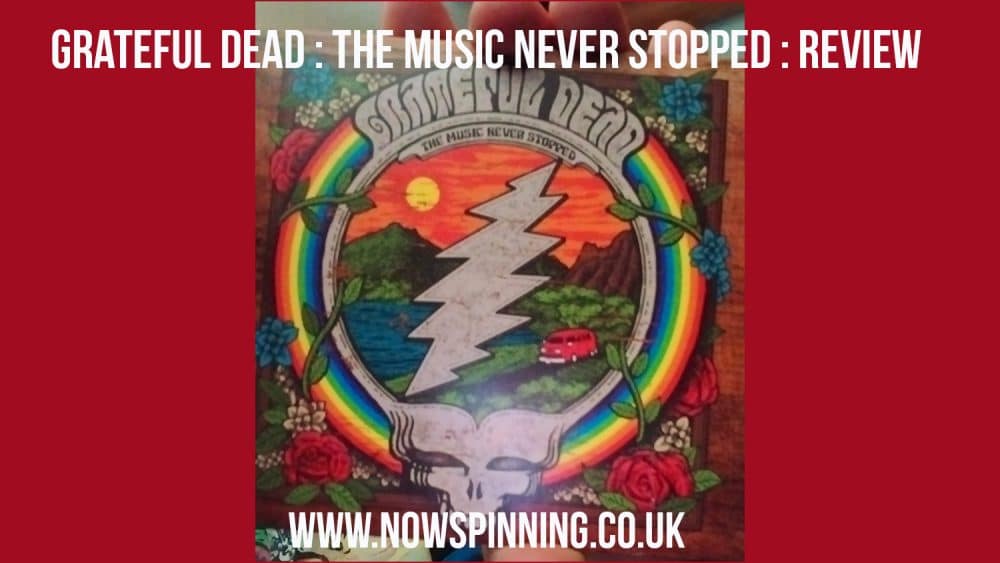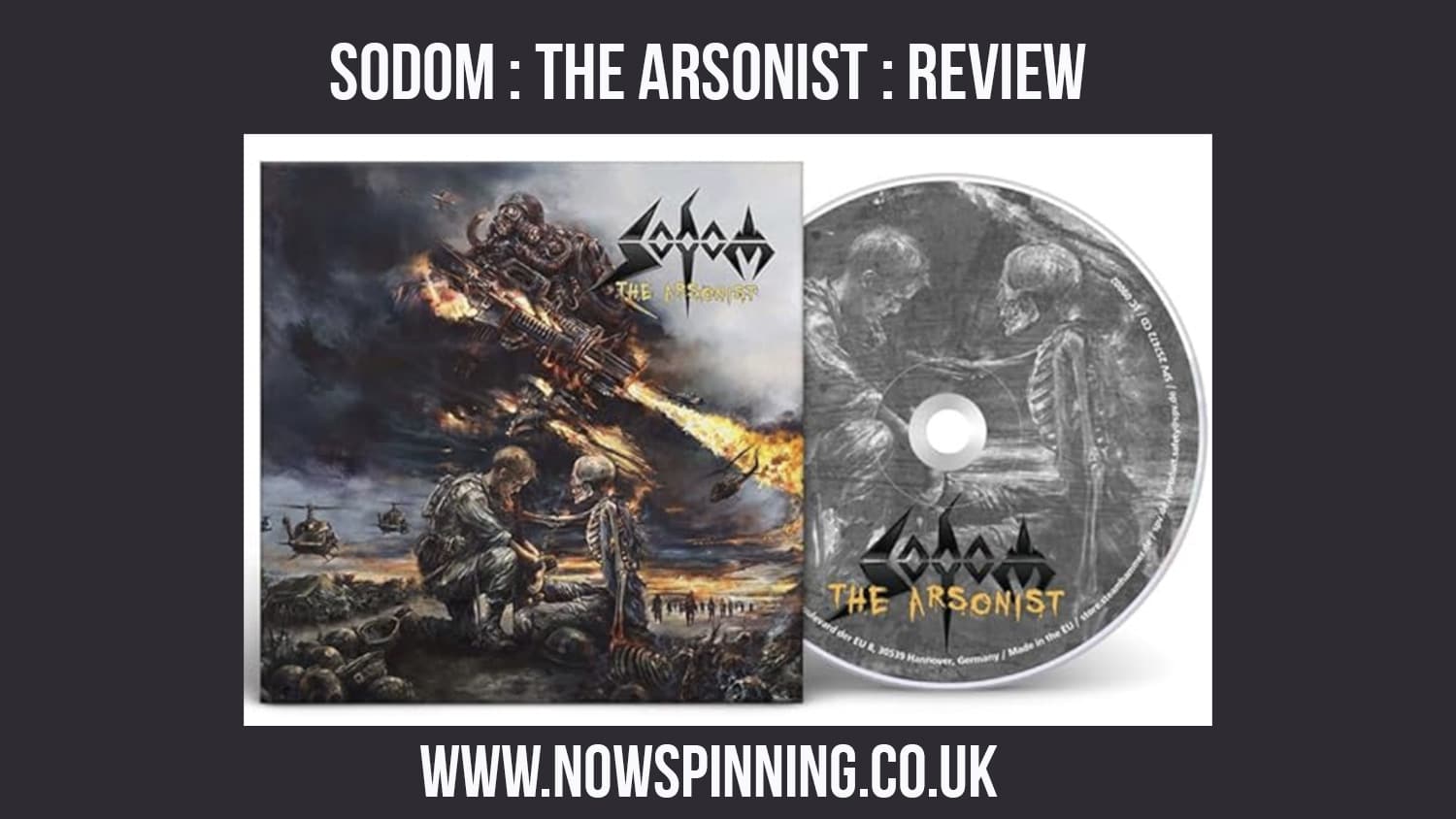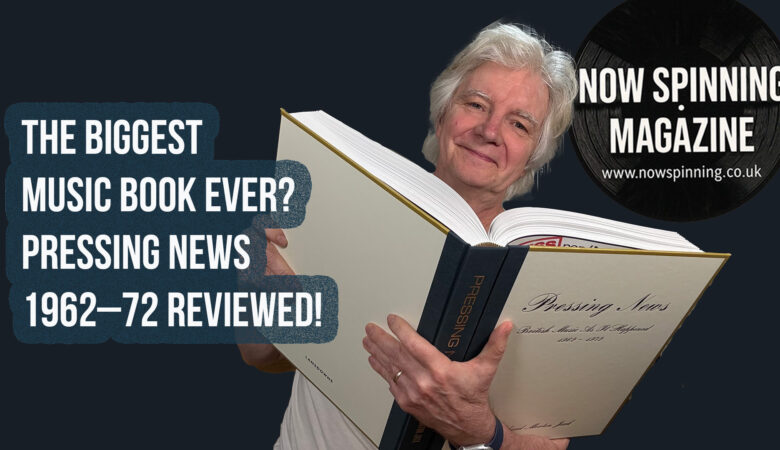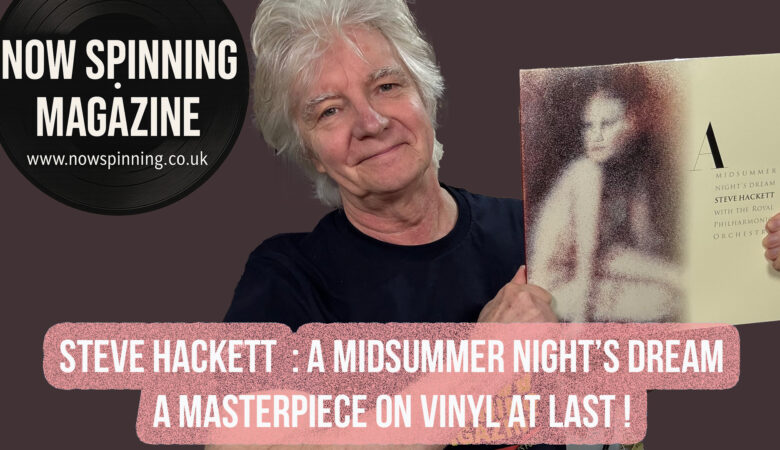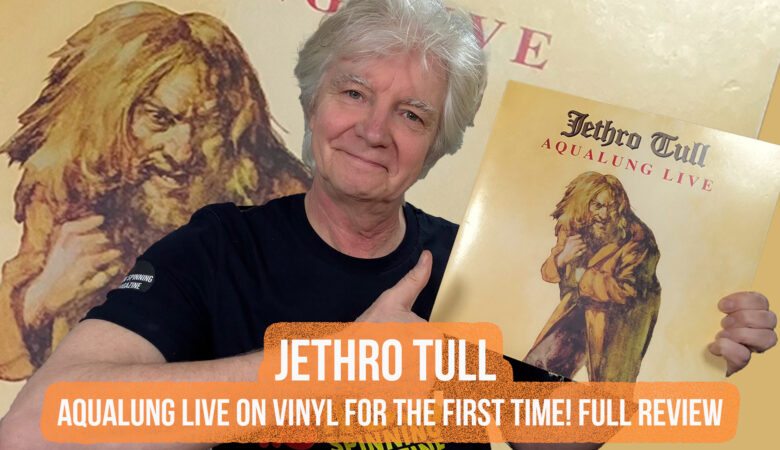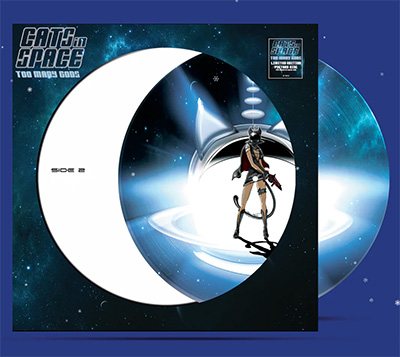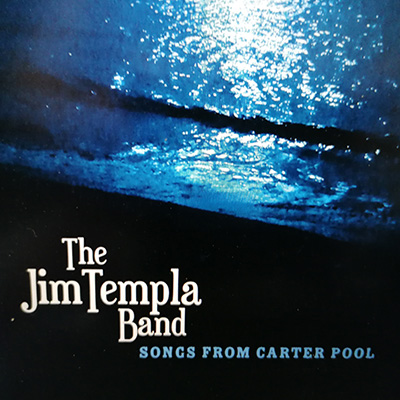GRATEFUL DEAD- THE MUSIC NEVER STOPPED: A REVIEW
Deadheads, of which I count myself, aren’t exactly objective when it comes to talking about the Grateful Dead and their music. We are a dedicated bunch, who can hear any live Dead recording and tell you what era and sometimes even what year a certain performance was from, just by the sound of the band. Is the music energetic, psychedelic, with a healthy helping of blues? That would probably be anywhere from 1968 – 1970. If the songs move effortlessly from tight country tinged rockers into long and winding psychedelic jams, you are probably somewhere in 1972. If the music seems more laid back with a more exploratory and spacey approach to something akin to jazz rock, we’re into 1973 – 1974. Bouncy, jovial, jammy grooves that feel like a distant cousin to reggae, it must be spring ‘77. I could keep going, but you get my point. Deadheads know the Grateful Dead. With all of this in mind, it may seem pointless for a Deadhead to give you a review of anything released under that iconic lightning skull banner. I could just probably just say, this latest release is amazing and transcendent and be done. My fellow Heads would get it, while the unconverted would just roll their eyes, and say “yeah, uh huh, sure, ya damn dirty hippy.”
That said, I do think I am actually a good deadhead to review a Grateful Dead release. I like to think that when it comes to the Dead, I’m more objective then most. Yes I love this band, unapologetically, but I am also willing to admit that they are seriously flawed in ways that most other legendary bands are not. Let’s start with the studio albums. The Grateful Dead notoriously hated the confines of the studio. Most of their thirteen studio albums, though not all, are spotty at best, with at least one or two turds sitting amongst some truly great material that was almost always better on stage. American Beauty, Workingman’s Dead, and I’ll throw in Blues For Allah, are in my opinion, the three times the Grateful Dead were completely successful in the studio. Okay, I would also give props to 1968’s wildly experimental Anthem of the Sun, but that one really is more of a hybrid of live and studio performances, mixed as Jerry said “for the hallucinations.” The musicianship is mostly great, but not on the level of say a prog rock band like Yes, or even on the level of their southern blues rock peers, The Allman Brothers. Jerry Garcia and Phil Lesh, probably had the best chops of anyone in the band, and while I’m not sure they were quite virtuoso level, they were extremely adventurous and creative improvisers when on stage. The vocals could be great as on American Beauty, but most often they were passable, and on rare occasions atrocious. The latter two characteristics were especially apparent live, which ironically is the best way to hear the Grateful Dead. Lastly, the Grateful Dead were not cool. Yes they have a huge dedicated cult following, and Jerry Garcia was charismatic and lovable, but not cool. At least not cool in the way Mick Jagger, Jimi Hendrix, or Lou Reed were cool. The Dead for all of their earnestness and experimentalism, were actually kind of dorky.
So, how did such an uncool band, with a spotty discography, and some obvious musical limitations become such an iconic and beloved group? The answer is the live show. The Dead were never as Bob Weir would say, “just exactly perfect,” on stage, though they came close several times, they were able to hit on moments of musical transcendence that alluded even the most skilled bands. The Dead, even with their limitations, knew how to improvise. Not every improvisation worked, but the vast majority were at the very least, interesting. The best Grateful Dead music has a searching, wandering quality that was always specific to a certain time and place, never to be replicated. I haven’t heard every single Dead show, but I have heard enough that I feel like I can say every single show was unique. And for every plane crash of bum notes or off key singing, there are even more moments where the music sparkles from the amps, climbing impossible mountains, and exploring undiscovered lands of sound and music. This contrast between plane crash and transcendence could sometimes happen within the same song. For instance, on Dick’s Picks Vol. 8 there is a version of the Young Rascals tune, Good Lovin’ where the first two minutes are a mess. There are squeals of unwanted feedback, and really poor background singing. After that we hit a drum solo. The drum solo is fine as rock drum solos go; nothing special exactly, but a welcome relief from the previous sonic trash heap. At five minutes, and twenty two seconds, the rest of the band comes back, and this time they are on fire. For the next eight minutes, Jerry Garcia’s guitar blazes, as the whole band locks in behind him, burning away any evidence of those first two painful minutes. At around thirteen and a half minutes the vocals return, while still not perfect, they are elevated and energised by the spectacular jam they just came out of. That folks, is why Deadheads keep coming back. That is why the Grateful Dead can release five or so live albums a year, thirty years after their last performance as a band, and every one of them will enter the charts on the back of physical album sales, even in the streaming era.
That’s a lot of preamble, to tell you that this latest Grateful Dead release is worth your time. The Grateful Dead turned 60 this year. As celebration, they released a massive sixty cd box set full of live concerts from across their 30 years of touring. Believe it or not, that box, priced around $600 usd, has already sold out. For the Deadhead on a budget, like myself, there is a wonderful much more modest set that picks the crème de la crème of the larger set and spreads it across three excellent cds. What stands out in this set is the track sequencing. The songs are from different line ups in different eras. But rather than separating each era and line up and ordering the performances chronologically, the compilers elected to do it mixtape style, moving from the late 60s, to the 80s, back to the 70s, forward to the nineties and so on. Like any great mixtape, everything flows and feels part of a whole. Each disc is sequenced like a setlist, performed by several different Grateful Deads, without ever being jarring.
I’m not gonna go through every track here, but I would like to point out my favorite moments. There is “Althea,” from a 1981 show in Connecticut, that is according to the fan voting site, headyversion.com, the ultimate version. I have to agree with the consensus on this one. Jerry’s guitar solo is excellent. There is a long version of “Playing In the Band.” I have a funny relationship with “Playin’.” The song itself is not one of my favorites, but for some reason it always opens itself up to some of the Dead’s most adventurous jamming. The version on this set taken from New York in 1973 is no exception. Jerry’s guitar is psychedelic bliss complimented by thunderous lead bass playing from Phil. Speaking of Phil, he and Bobby are spectacular on a 1971 take of the Otis Redding soul shaker, “Hard to Handle.” Bobby’s rhythm guitar playing on that track is some of the best I’ve ever heard from him.
On disc two we get a wonderful version of the oft paired “Scarlet Begonias” and “Fire On the Mountain” from Berkeley, 1984. This version is unique for a solid early performance of their future megahit “Touch of Grey” sandwiched in between. There is an emotional reading of the rarely performed “Attics of Life,” from Boston ten years later. Another common pairing of “Estimated Prophet,” and “Eyes of the World,” is given a stellar reading, recorded at Colorado’s iconic Red Rocks amphitheater, August 12th, 1979, nine days before your reviewer and future deadhead was born.
The final disc contains an energetic “Truckin’” that segues seamlessly into the classic Chicago blues of Howlin’ Wolf’s “Smokestack Lightning.” An always welcome 1972 version of “Bird Song,” pleases the senses with a floating jam led by Garcia. “Black Muddy River,” from 1989, and “Days Between,” from 1993 are both powerfully beautiful Garcia-Hunter ballads.
Everything here works. This set works as a great sampler for the prospective deadhead, and as a marvellous reminder for the seasoned one. This is one every head is gonna want on the shelf.
Justin Griffin | Now Spinning Magazine


